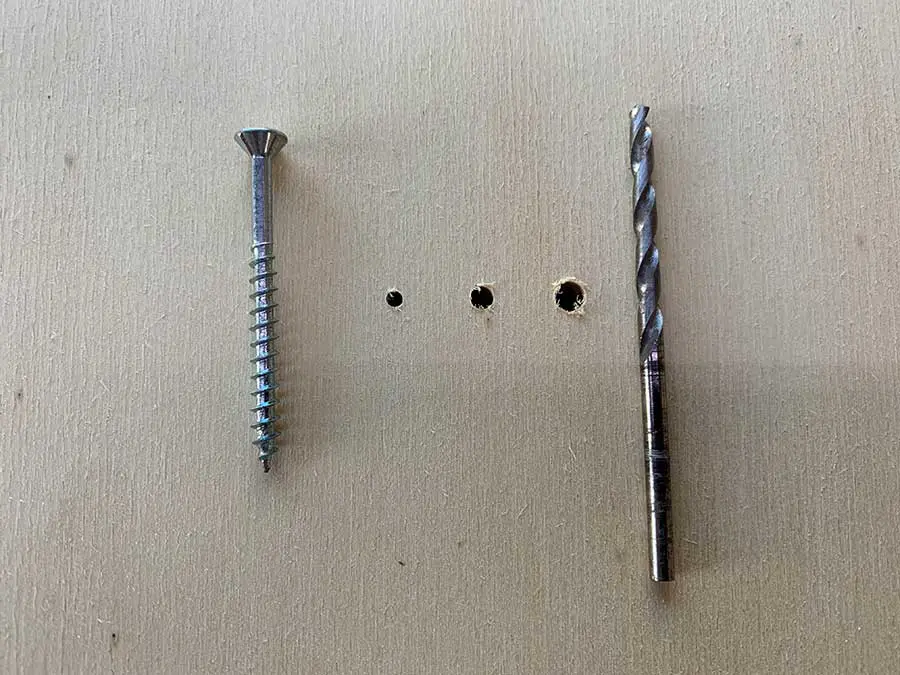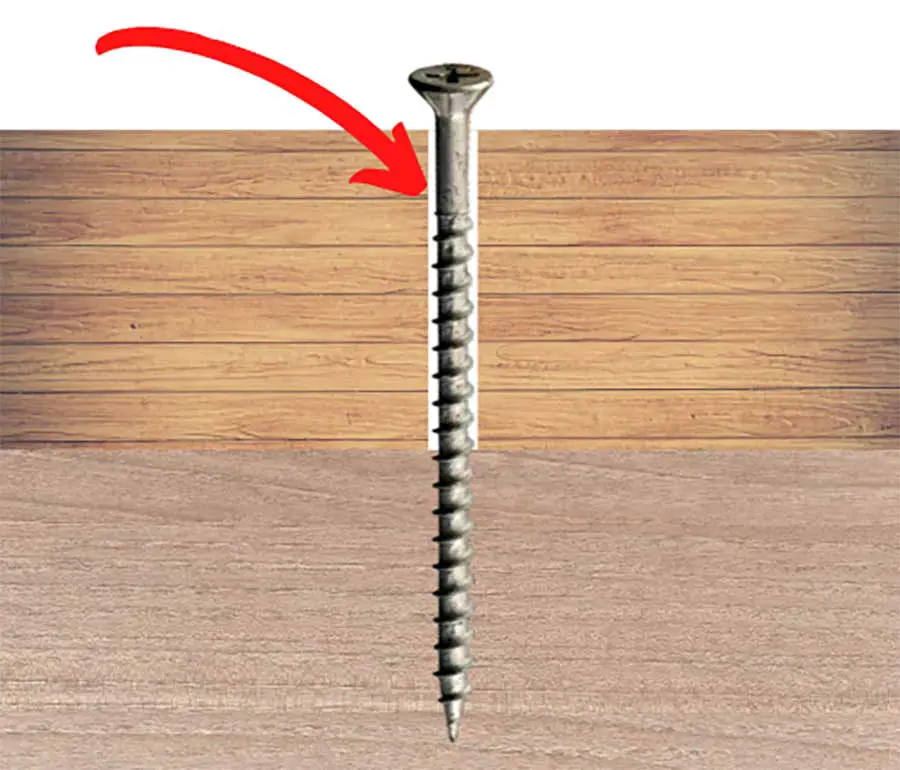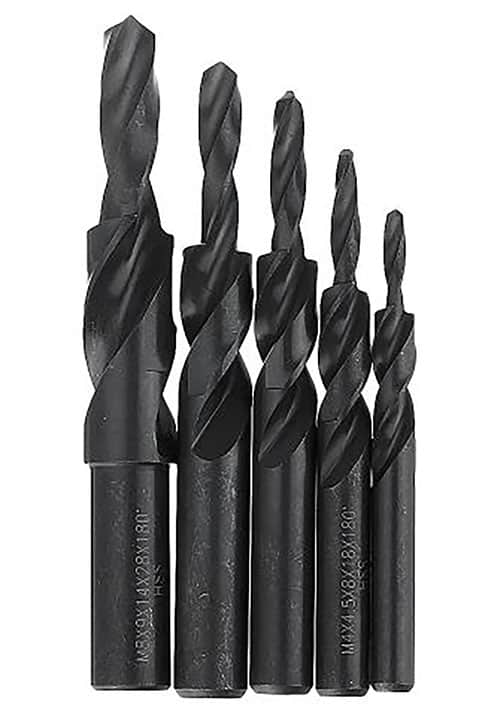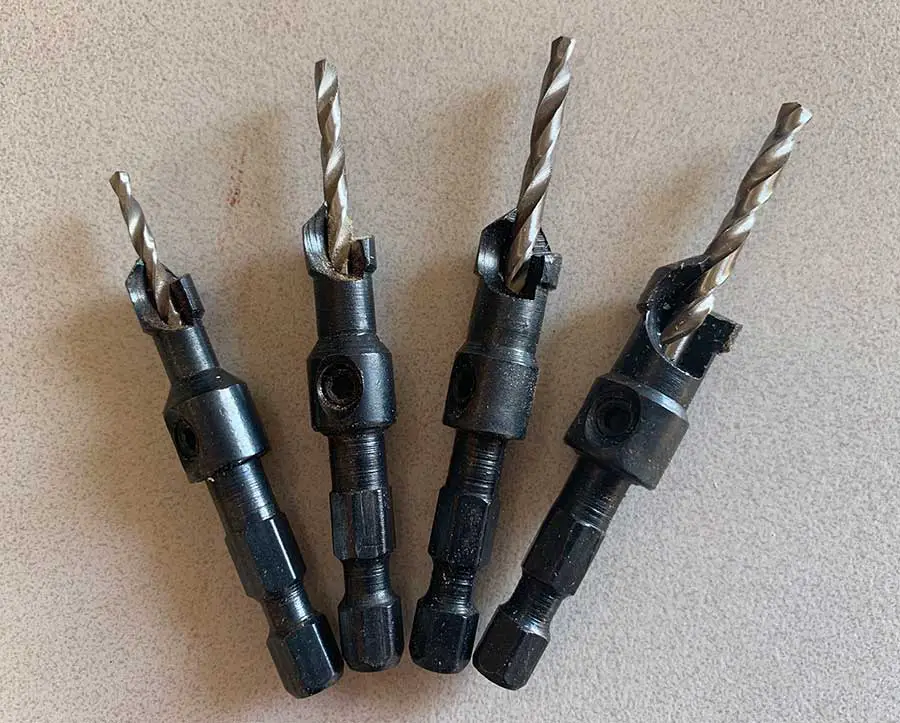I have inserted thousands of screws into timber over the years, and one thing that is always common with a good joint is, making sure the screws are inserted properly. Now, this seems an easy task but one question that always comes up is What size pilot hole should I drill?
The correct size pilot hole is one that provides enough clearance for the shank of the screw so that it doesn’t bind in the timber while allowing the screw threads to bite into the timber. Generally, a pilot hole is 75-80% of the screw diameter.
In this article, I will help you discover the perfect size pilot hole for any application and explain a few myths that are out there so keep reading to find out all you need to know about what size pilot hole should I drill.
Why Do I Need A Pilot Hole?
Let’s first discuss, exactly why you need a pilot hole while screwing into the timber so you better understand the application.
All screws have a shank or body which is wrapped in threads. The threads are part of the screw that bites into the wood fibers enabling the screw to tighten down into the hole.
The purpose of a pilot hole is to clear the diameter of the shank or body of the screw so that only the threads engage with the wood fibers. Failure to do this will result in wood splitting, especially in hardwoods or MDF-type products.
A pilot hole can also help prevent the splitting of the timber as the wood ages over time.
Check out this video explaining the easy way to select the best size pilot hole.
What Size Pilot Hole For 5mm Screw?
For a 5mm (or roughly #10) wood screw, the recommended pilot hole size would typically be around 3.5mm.
Here’s how you can determine the appropriate pilot hole size:
- Measure the Screw Diameter: In your case, you mentioned a 5mm wood screw.
- Calculate Pilot Hole Size: The general rule of thumb is to use a pilot hole that is about 75-80% of the screw diameter. So, for a 5mm screw, you’d calculate it as follows:
- 5mm x 0.75 = 3.75mm
- 5mm x 0.80 = 4mm
- You have a range of 3.75mm to 4mm for the pilot hole diameter.
- Select the Size: You can choose either 3.75mm or 4mm as your pilot hole size. The choice may also depend on the specific wood you’re working with and the type of screw you’re using. If you’re working with hardwoods, it’s often better to lean towards the larger end of the range (4mm) to prevent splitting.
What Size Pilot Hole For 4mm Screw?
The correct size pilot hole for a 4mm screw is 3.2mm. Using the above rule that a pilot hole should be 75-80% of the screw diameter, you work this out using this method: 4mm x 80% = 3.2mm.
What Size Pilot Hole For 6mm Screw?
The correct size pilot hole for a 6mm screw is 4.8mm.
Are You Screwing Into Softwood Or Hardwood?
Answering this question will be a huge leap forward in discovering the best size pilot for your job at hand.
Generally speaking, softwoods require a smaller size pilot hole or sometimes no pilot hole although this is not recommended. Also, most plywoods rarely need a pilot hole as long as you are screwing into the face of the plywood. Always use a pilot hole when screwing into the end grain.
Hardwoods on the other hand will need a slightly larger pilot hole. On my last project, the wood was very hard and even after drilling a regular pilot hole, the threads of the screw struggled to bite into the wood. For this, I opted for the next drill size up to complete the job.

Best Pilot Holes Sizes
After years of using pilot holes, I thought it would be best to list the pilot hole sizes in the drill bit size tables below. Where I have listed a small bradawl simply means the hole is so small it’s not really needed for that particular screw.
These are the recommended hole diameter for each type of screw. I recommend printing these tables out to have in your workshop. If you want to see another way to pick the best pilot hole size, check out the paragraph below these tables.
Drill Bit Size Chart
Imperial Chart
| Gauge | Inches | ||
| Screw Size | Clearance Hole | Pilot Hole (Softwood) | Pilot Hole (Hardwood) |
| 0 | 1/16 | Small Bradawl | 1/32 |
| 1 | 5/64 | Small Bradawl | 1/32 |
| 2 | 3/32 | Small Bradawl | 3/64 |
| 3 | 7/64 | Small Bradawl | 1/16 |
| 4 | 7/64 | Small Bradawl | 1/16 |
| 5 | 1/8 | Small Bradawl | 5/64 |
| 6 | 9/64 | 1/16 | 5/64 |
| 7 | 5/32 | 1/16 | 3/32 |
| 8 | 11/64 | 5/64 | 3/32 |
| 9 | 3/16 | 5/64 | 7/64 |
| 10 | 3/16 | 3/32 | 7/64 |
| 11 | 13/64 | 3/32 | 1/8 |
| 12 | 7/32 | 7/64 | 1/8 |
| 14 | 1/4 | 7/64 | 9/64 |
| 16 | 17/64 | 9/64 | 5/32 |
| 18 | 19/64 | 9/64 | 3/16 |
| 20 | 21/64 | 11/64 | 13/64 |
| 24 | 3/8 | 3/16 | 7/32 |
Metric Chart
| Gauge | Millimeters (mm) | ||
| Screw Size | Clearance Hole | Pilot Hole (Softwood) | Pilot Hole (Hardwood) |
| 0 | 1.6 | Small Bradawl | 0.8 |
| 1 | 2.0 | Small Bradawl | 0.8 |
| 2 | 2.4 | Small Bradawl | 1.2 |
| 3 | 2.8 | Small Bradawl | 1.6 |
| 4 | 2.8 | Small Bradawl | 1.6 |
| 5 | 3.2 | Small Bradawl | 2.0 |
| 6 | 3.6 | 1.6 | 2.0 |
| 7 | 4.0 | 1.6 | 2.4 |
| 8 | 4.5 | 2.0 | 2.4 |
| 9 | 5.0 | 2.0 | 2.8 |
| 10 | 5.0 | 2.4 | 2.8 |
| 11 | 5.5 | 2.4 | 3.2 |
| 12 | 5.5 | 2.8 | 3.2 |
| 14 | 6.5 | 2.8 | 3.6 |
| 16 | 7.0 | 3.6 | 4.0 |
| 18 | 7.5 | 3.6 | 5.0 |
| 20 | 8.5 | 4.5 | 5.5 |
| 24 | 9.0 | 5.0 | 5.5 |
How To Pick A Pilot Hole Drill Size On The Go
As you get more experienced, you will find it a lot easier to grab a drill bit on the fly rather than referencing back to this table all the time.
To do this, simply hold the screw up to the light, then hold a drill bit up in front of the screw. If the drill bit diameter covers the shank of the screw while showing the threads, you have the correct drill bit to use.
I suggest trying to use this drill bit then drive in a screw and see how it goes. As I mentioned earlier, softer wood may require a smaller hole while hardwoods may require a bigger hole. A little bit of trial and error and experience will get the correct size hole every time!
What Size Of Pilot Hole Should Be Used For A Screw?
The pilot hole should be 75-80% of the screw diameter. Use a set of calipers to measure the thickness of the screw including the threads. Just double-check this to ensure the pilot hole is big enough for the shank of the screw.
What Size Drill Bit Do You Use?
A pilot hole should be big enough that the shank or body of the screw can pass through but the screw threads engage in the wood fibers.
What Is The Difference Between A Pilot Hole And A Clearance Hole?
You may have noticed in the table above, that I have listed sizes for a pilot hole and a clearance hole, but what is the difference?
A pilot hole is always drilled into the second piece of timber the screw is going into. As mentioned above, it is the size of the shank of the screw while still allowing the threads to bite into the wood fibers.
A clearance hole is drilled into the first piece of timber. The clearance hole should just be slightly larger than the thread diameter of the screw. For a complete overview of why a clearance hole is needed, take a look at this article.
The image below shows a clearance hole as per the red arrow.

The reason a clearance hole is needed is so that the threads on the screw don’t bind in the timber and cause jacking. The clearance hole will allow both pieces to pull together tightly. Take a look at my article which explains more.
Can I Screw Timber Without A Pilot Hole?
Yes, you can screw timber together without a pilot hole although there are some details to consider. When we screw into timber without a pilot hole, the screw will always take the path of least resistance.
This will mean your screw could go in on an angle and sometimes the screw could poke through the side of the material. This nearly always happens when you are screwing into end grain or screwing a box together.
Another common thing that happens when you don’t drill a pilot hole, is the screwdriver tip could slip out of the screw. See why here.
While it is possible to screw timber without a pilot hole, I would always recommend you drill a pilot hole. Your project will be much neater and less likely parts of the timber will split.
Does This Mean I Need 2 Holes For Every Screw?
If you want your project to come together strong and neat, yes I would suggest drilling 2 holes for every screw. I know you will hate to hear this but it does not take long to do. BUT WAIT, this is an alternative that will be much quicker than changing out drills all the time.
I suggest grabbing some of these step drills as pictured below. I use them all the time.

If you do not want to buy some of these step drills, I will show you how quick and easy it is to drill a pilot and clearance hole for your screws.
For this, you are going to need 2 drills. Most people have at least 2 drills or more in their workshop. If you don’t, I do suggest grabbing another one as it will make your life a lot easier. These are the ones I use and recommend.
In one drill, put your smaller drill bit for your clearance hole. In the 2nd drill, put your larger drill for the clearance hole. Then it’s just a matter of going along drilling all your clearance holes and then all of your pilot holes. It’s actually much quicker than thought.
Best of all you will end up with a neatly finished project!
How Do I Know If My Pilot Hole Is Too Big?
As you drive in the screw, it should bite into the wood and tighten down into the hole and bury the screw head. If your screw gets down to the head and then starts spinning in one spot, it has stripped from its hold in the timber. This means your pilot hole was too big.
This is a good reason to always try your pilot hole for the correct size in a scrap piece first. Like I said earlier, a little experience will soon let you know if you have the correct size drill.
Do I Need A Countersink Hole?
For a much neater job and for finer work, I do recommend using a countersink bit. This will allow the screw head to be below the surface of the wood.
Most softer woods may not need a countersink but hardwoods nearly always need one. Some wood screws come with small raised parts under the screw head. These are what chew the wood and allow the screw head to bury itself flush with the timber surface.
If your wood screws are smooth under the head, you may require the use of a countersink bit. Just try one first in a scrap piece.
Just like pilot holes and clearance holes, there is an easier way to drill a pilot hole and countersink hole in one. The image below shows the drills I have in my workshop which are very handy.

You can get yourself some of these drills here.
Conclusion – What Size Pilot Hole Should I Drill?
The correct size pilot hole is one that is the same size as the shank of the screw but smaller than the screw threads. In my honest opinion, I would always use a pilot hole for your next woodworking project. You will get a much better result both in joint strength and neatness.
It will also keep your stress levels low as the job at hand will go together much easier. Like I always say, let’s have fun in the workshop.
If a job is worth doing, it’s worth doing right!
FAQ’s
What Pilot Hole For 4.5mm Screw?
The correct size pilot hole for a 4.5mm screw is 3.5mm.
How Big Of A Pilot Hole For A Screw?
The correct size pilot hole for a screw should be 75-80% of the screw diameter. I usually go slightly smaller in softwoods and slightly larger in hardwoods.
What Size Drill Bit For A 6mm Screw?
A 6mm screw requires a 4.8mm drill bit for a suitable pilot hole.
How Much Smaller Should A Pilot Hole Be For A Screw?
A pilot hole should be 75-80% of the screw diameter for a pilot hole. You work this out by using this formula: Screw diameter x 80% = Pilot hole size (approx).



